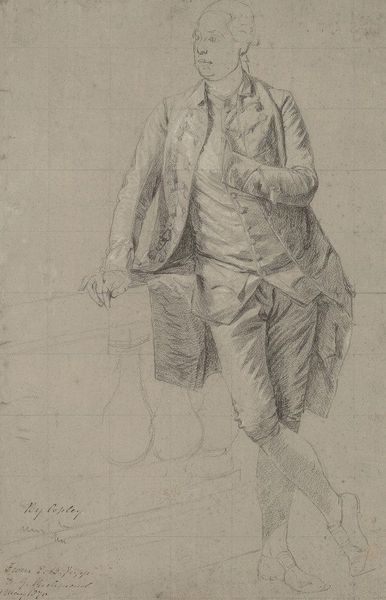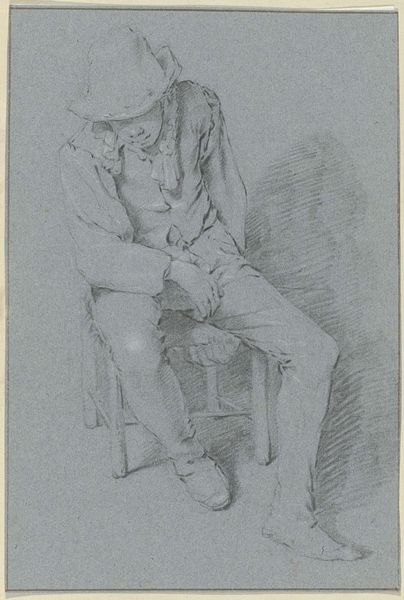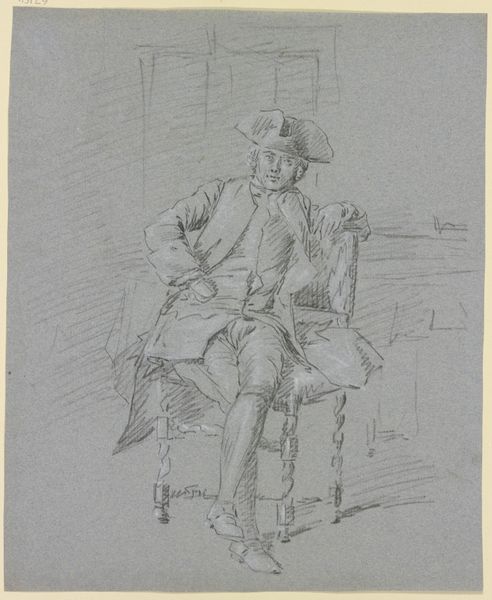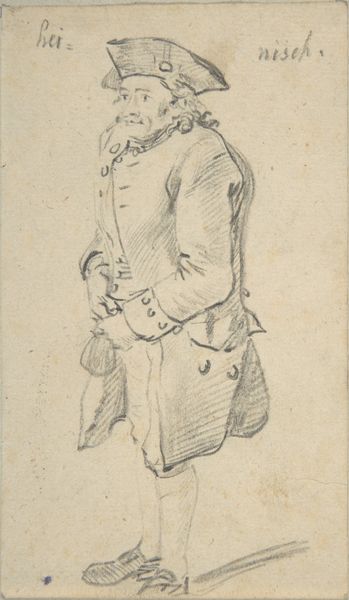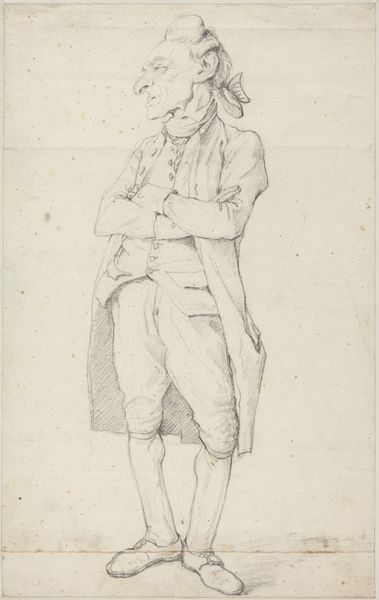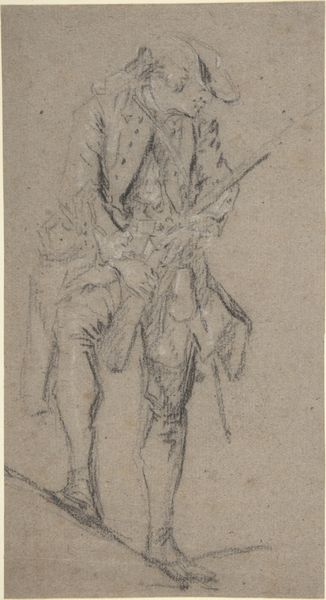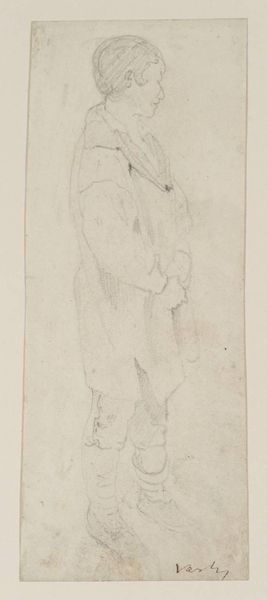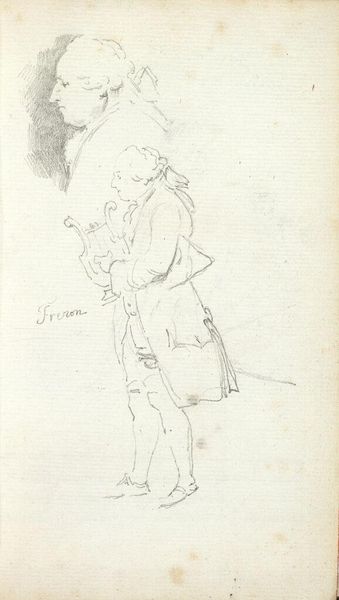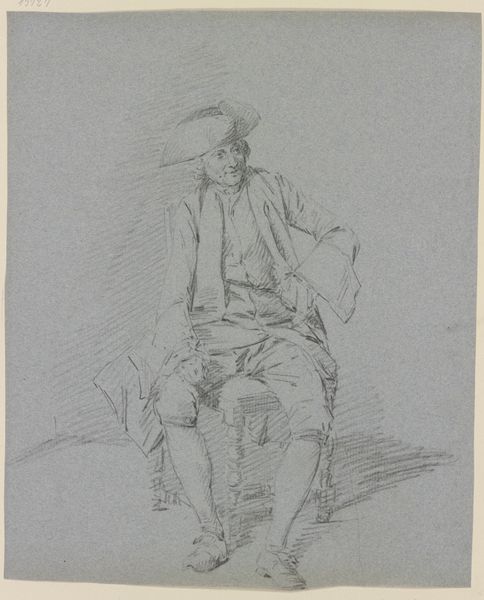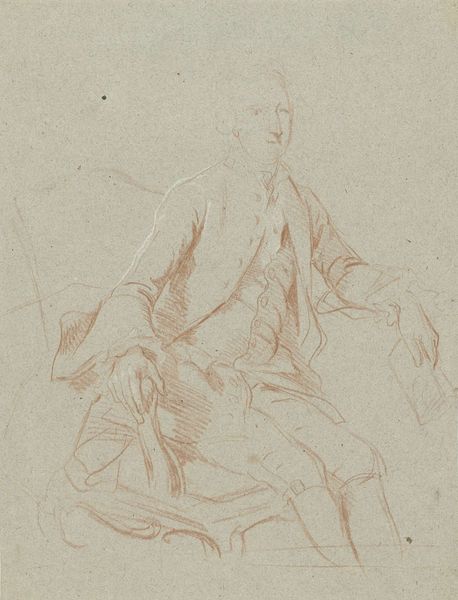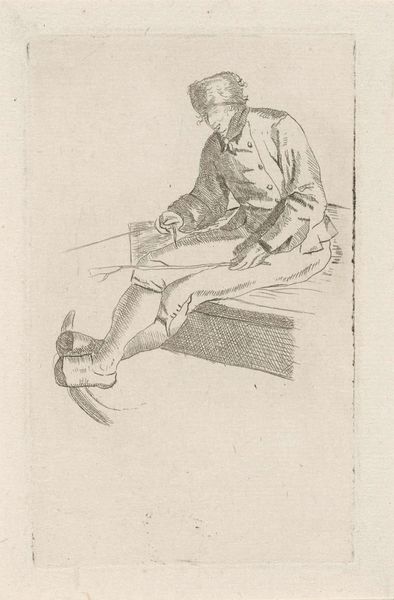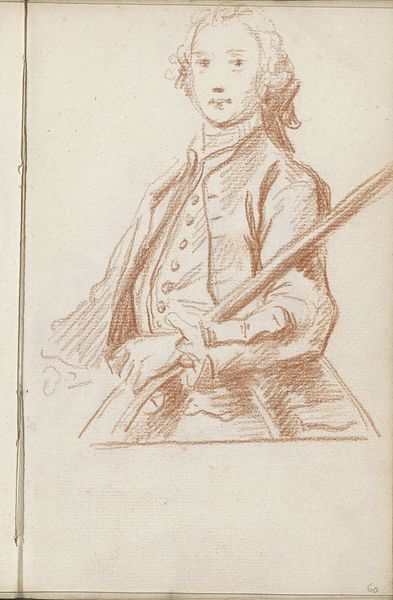
drawing, pencil
#
portrait
#
drawing
#
neoclacissism
#
pencil sketch
#
pencil
#
academic-art
Dimensions: height 290 mm, width 221 mm
Copyright: Rijks Museum: Open Domain
Curator: Welcome. Before us is "Seated Man with Sheet of Paper in Hand," a pencil drawing crafted sometime between 1735 and 1807, currently residing here at the Rijksmuseum. The artist is Hendrik Pothoven. Editor: My first thought is quiet contemplation. There’s something almost melancholy in the slumped posture, though the sharp details of the coat speak to his social standing. What's most compelling is how he's engaging with the paper; it could be a declaration, a letter, or even a sketch. Curator: The power lies in the subtle symbolism of academic art. Notice the man’s formal attire—each button, each crease, speaks of status and societal roles, aligning with the prevalent ideals of decorum and order. What thoughts might the paper symbolize, and how might it upset the status quo? Editor: Exactly! The paper itself is so central—a literal blank page filled with potential for change or, ironically, reinforcement of existing power dynamics. In this period, writing, knowledge production, and literacy weren't democratized, so the man's reading itself suggests privilege and class difference. We're seeing knowledge concentrated. Curator: Precisely. And consider the Neo-classical context. Though seemingly straightforward, Neoclassicism revived and reimagined classical symbols, using art to comment on contemporary culture. This man could be absorbing, transmitting, or actively crafting a new set of values—but towards what goal? Editor: It raises questions about the individual's relationship with enlightenment ideals during that period. This person is both a product and a possible agent of change, caught between established hierarchies and intellectual shifts. There is such a weight there, like his posture embodies an uncertain present! Curator: An apt observation, as there is cultural memory encoded within. The act of reading and writing—capturing an idea on paper—echoes the ongoing narrative between knowledge, individual interpretation, and cultural values throughout the ages. Each element invites the viewer into that reflection. Editor: Ultimately, for me, the drawing becomes a point of connection across time, allowing us to reflect on our own position in relation to these shifting, complex power structures of today. Who holds the paper, and what stories get told? That's the underlying question. Curator: Well said. May we carry these thoughts with us as we engage with our present and envision the marks we leave for future generations.
Comments
No comments
Be the first to comment and join the conversation on the ultimate creative platform.
